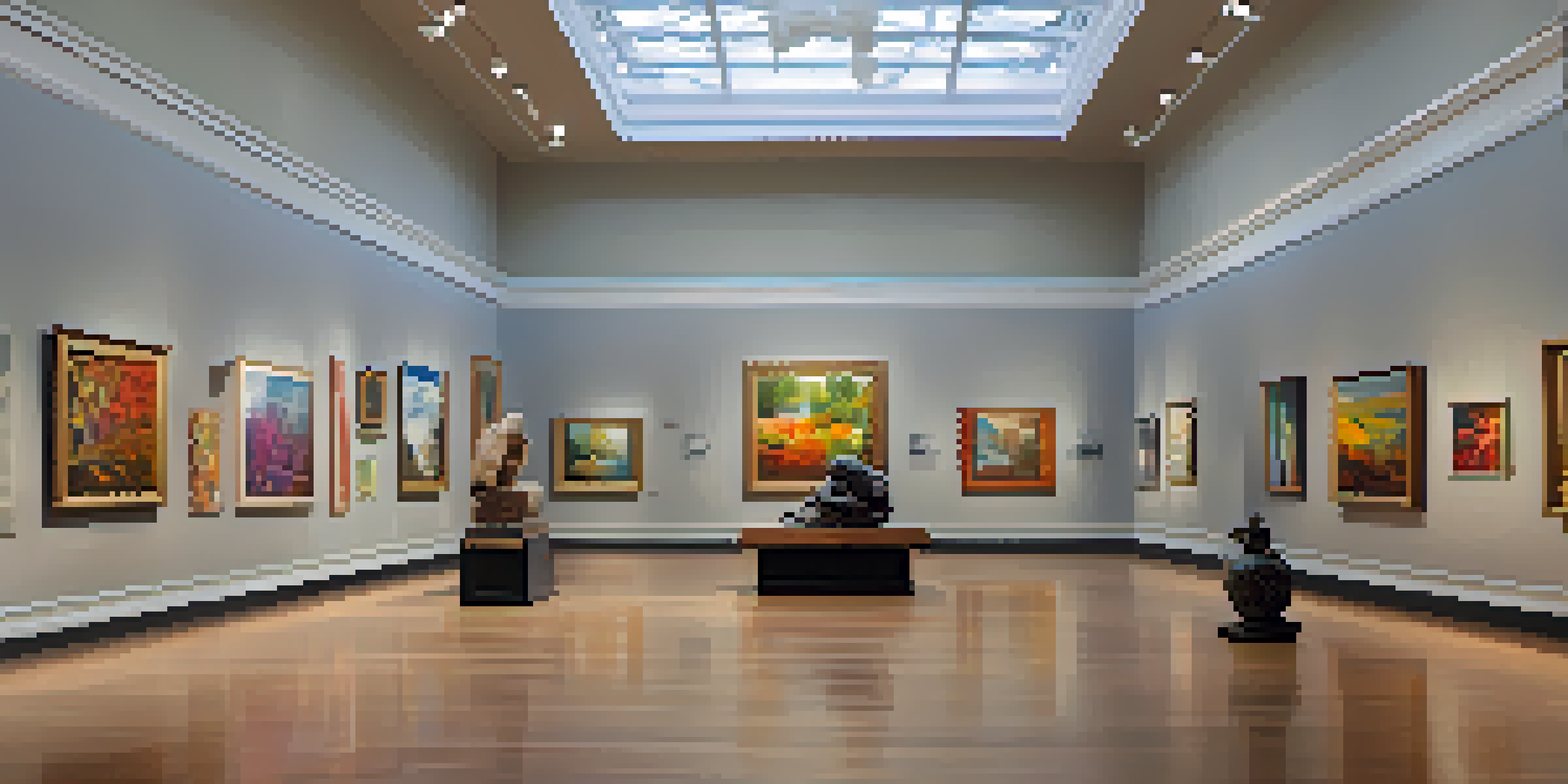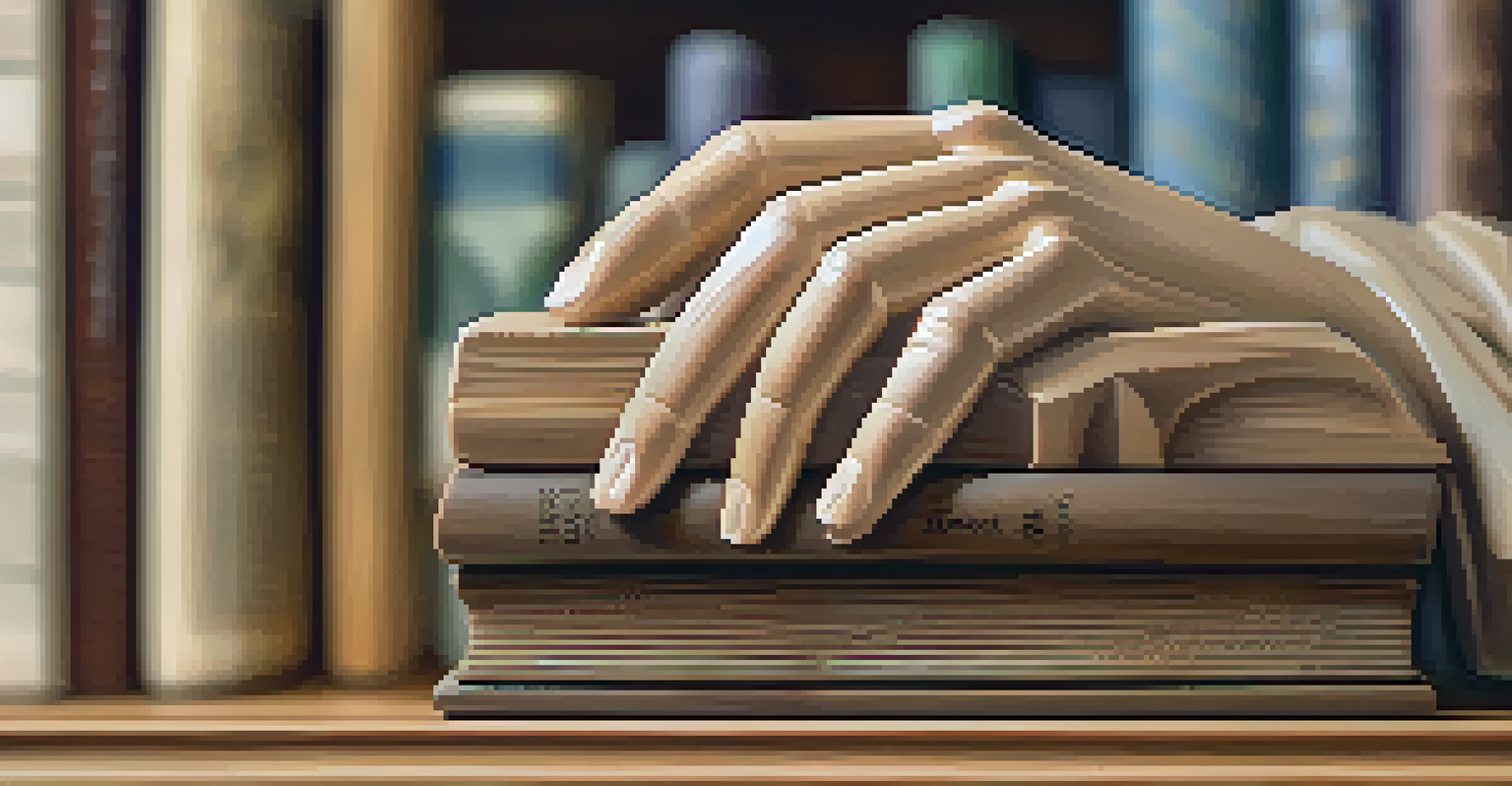Art Collectors: Gatekeepers of Cultural Value and Trends

Understanding the Role of Art Collectors
Art collectors play a pivotal role in the art world, serving as both patrons and custodians of cultural heritage. They invest not just money, but passion and dedication into acquiring pieces that resonate with them. This deep connection often leads to a greater appreciation for the artists and their messages, bridging the gap between creators and audiences.
The collector is the most important part of the art world; without them, the work of artists would just sit in a studio and never be seen.
Collectors come from various backgrounds, each with unique tastes and motivations. Some may focus on emerging artists, while others seek to acquire masterpieces from renowned figures in art history. Regardless of their focus, these individuals contribute significantly to the narrative of art, shaping how we perceive and value different movements and styles.
Moreover, the choices made by collectors can have a ripple effect on art trends and market values. By championing certain artists or styles, they can elevate lesser-known talents to prominence, thereby transforming the cultural landscape. This influence underscores the power collectors hold as gatekeepers of artistic value.
The Impact of Collectors on Cultural Value
Cultural value in art is not solely determined by the market; it's also shaped by the stories behind the pieces and their collectors. When a collector champions an artist, they help to imbue that work with significance, often adding layers of meaning based on their personal narratives. This relationship between collector and artist can enhance the perceived value of the artwork.

For instance, when a prominent collector purchases a piece, it can elevate that artist's status in the public eye, often leading to increased interest from museums and galleries. This phenomenon highlights how collectors can act as cultural ambassadors, bringing attention to artists who may otherwise remain unnoticed. Their influence can play a crucial role in defining cultural trends and values.
Collectors Shape Cultural Value
Art collectors not only invest in artworks but also influence cultural narratives and trends by promoting artists and styles.
Additionally, collectors often share their collections with the public through exhibitions and loans to galleries. This accessibility fosters a greater appreciation for art, encouraging others to engage with diverse forms of expression. In this way, collectors help preserve cultural heritage while also promoting contemporary voices.
Navigating Trends: Collectors as Influencers
Art collectors are often at the forefront of identifying and promoting new trends within the art world. Their intuition and keen eye for promising talent can set the stage for what's next in art, influencing not only what is created but also what is celebrated in the broader culture. This ability to spot trends is a valuable asset that many collectors hone over time.
Art is not what you see, but what you make others see.
For example, the rise of street art and urban artists in galleries can be traced back to a handful of collectors who recognized the potential in these art forms early on. By investing in these artists, they helped legitimize street art as an essential part of contemporary culture. This demonstrates the power of collectors to shape the trajectory of artistic movements.
Furthermore, collectors often engage in discussions and networking within the art community, sharing insights and fostering collaborations. Their active participation helps to create a dynamic environment where emerging trends can flourish. As they spotlight new talents, they also attract other collectors and investors, amplifying the impact on the art market.
The Emotional Connection: Art as Personal Expression
For many collectors, art is more than an investment; it's a deeply personal journey. The pieces they choose to collect often reflect their own experiences, values, and emotions. This connection transforms their collections into a narrative that tells a story about who they are and what they believe.
Take, for instance, a collector who focuses on works that address social issues. Their collection may not only provide financial value but also serve as a platform for raising awareness and sparking conversations. In this way, art becomes a means of personal expression and a vehicle for social change.
Emotional Connections with Art
Many collectors view art as a personal expression of their values and experiences, often forming meaningful relationships with artists.
Moreover, the emotional connection to art can lead collectors to form relationships with the artists themselves. These connections often result in a deeper understanding of the artist's intent, enriching the collector's experience and appreciation of the work. As such, art collectors serve as conduits through which powerful stories and messages can be shared.
The Business of Art: Collectors and Investment
While passion drives many collectors, the business aspect of collecting cannot be overlooked. Art can be a lucrative investment, and savvy collectors often approach it with a strategic mindset. Understanding market trends, artist trajectories, and potential resale values are crucial for collectors looking to build not only a meaningful collection but also a profitable one.
For instance, the rise of digital art and NFTs has opened new avenues for investment, attracting tech-savvy collectors eager to explore this innovative space. By staying informed about these developments, collectors can identify opportunities that align with their interests and financial goals. This balance of passion and strategy is essential in the world of art collecting.
However, it's important for collectors to remember that the art market can be unpredictable. Economic shifts and changing tastes can impact the value of artworks, making it vital to approach collecting with both enthusiasm and caution. Ultimately, a well-rounded approach that values both emotional fulfillment and financial wisdom can lead to a rewarding collecting experience.
Challenges Faced by Art Collectors Today
Despite the excitement of collecting, art collectors face a variety of challenges in today's market. The increasing prices of artworks, particularly from established artists, can make it difficult for new collectors to enter the space. This financial barrier can lead to a homogenization of collections, where only the wealthy can afford to participate.
Additionally, the rise of online marketplaces has changed how collectors discover and acquire art. While this accessibility can be beneficial, it also raises concerns about authenticity and provenance. Collectors must navigate a landscape where they need to be vigilant and educated to ensure they are making wise investments.
Challenges in Art Collecting Today
Art collectors face rising prices, authenticity concerns, and competition that can hinder new collectors and diverse artistic recognition.
Moreover, the competition among collectors can lead to a sense of exclusivity that may deter emerging artists from gaining recognition. As collectors vie for attention and prestige, the focus can shift from supporting diverse voices to merely acquiring the most sought-after pieces. Addressing these challenges requires a commitment to inclusivity and education within the collecting community.
The Future of Art Collecting: Evolving Perspectives
As the art world continues to evolve, so too do the perspectives of collectors. The rise of social media and digital platforms has transformed how collectors engage with art, allowing for a more democratized approach to sharing and discovering new artists. This shift encourages collectors to broaden their horizons and explore diverse forms of expression.
Furthermore, there's a growing awareness among collectors about the importance of supporting underrepresented artists and communities. Many are now prioritizing inclusivity in their collections, seeking to amplify voices that have historically been marginalized. This evolution reflects a broader cultural shift towards social responsibility and ethical collecting practices.

Looking ahead, the role of collectors will likely continue to adapt in response to changing cultural landscapes. As they embrace new technologies and diverse perspectives, collectors have the potential to redefine what it means to be a guardian of art. This ongoing dialogue between collectors, artists, and the community will shape the future of art collecting for generations to come.